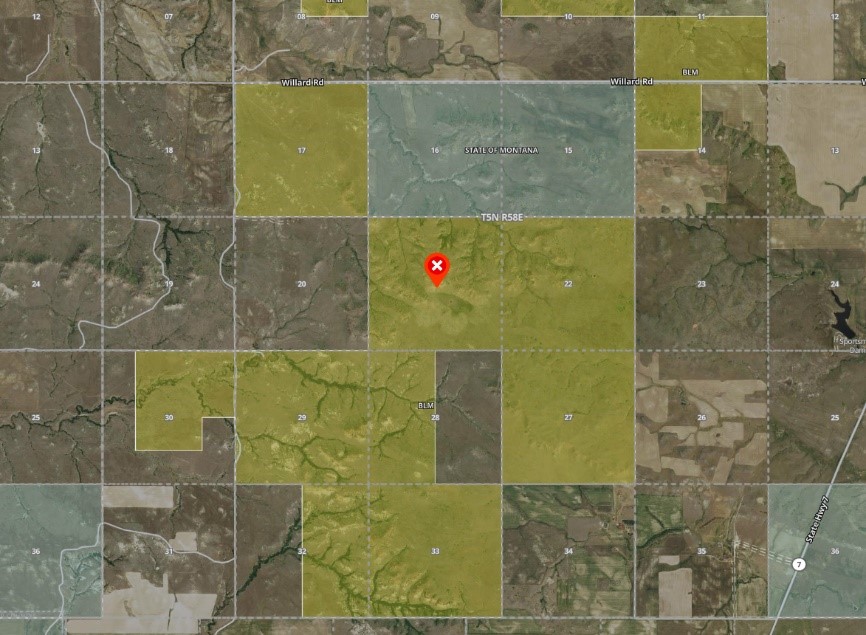BrianGrossenbacher-AA
Do you have any thoughts on this post?
In this short video, we demystify a crucial Farm Bill conservation program, the Environmental Quality Incentives Program (EQIP), and shed light on its benefits to hunters and anglers.
EQIP is a voluntary conservation program that allows farmers, ranchers, and forest landowners to enhance water quality, strengthen wildlife habitat, and reduce soil erosion and sedimentation.
The benefits of EQIP for fish, wildlife and agriculture are significant.
The Farm Bill is the largest piece of conservation legislation that will come before the 118th Congress. You can help ensure that habitat and wildlife remain central to sensible farm policy in the United States here
Learn more about Farm Bill Conservation Programs here
TRCP, partners, and hunters & anglers applaud bill introduction
Hunters and anglers have been working to prevent the sale of important public lands for years, and the recently introduced Public Lands in Public Hands Act would maintain valuable hunting and fishing access for sportsmen and women. This bipartisan legislation, introduced by Representatives Ryan Zinke (R-Mont.) and Gabe Vasquez (D-N.M.) would require congressional approval for the sale and transfer of public lands to non-federal entities in most instances. The biggest impact of the bill would be to prevent the Bureau of Land Management from selling important access parcels as part of its land disposal process.
What is the BLM Land Disposal Process?
The BLM is the nation’s largest landowner. The agency administers 245 million acres of federal public land primarily in 11 western states and Alaska. Currently, the Federal Land Policy and Management Act—federal law governing the management of BLM lands—directs the agency to identify lands for potential disposal, including sale, and the agency has been completing land use plans with land disposal lists for the past 45 years. While a comprehensive list of lands available for potential disposal does not appear to exist, estimates put the total at around 3.3 million acres.
When the BLM identifies lands for potential disposal, existing statute does not require the BLM to prioritize retention of parcels with public access. TRCP has analyzed several land use plans and identified numerous accessible and important public land parcels tagged by the BLM for potential sale across the West. The sale of such parcels could result in lost honey holes for hunters and anglers, and we agree that additional scrutiny is needed.
The law governing how the BLM completes land disposals was passed in 1976 and predates the advent of handheld GPS units that are now utilized by millions of outdoor recreationists to navigate property boundaries with confidence. It’s easy to see how small parcels in the past may have been viewed as low value for public access because they were difficult to locate and use. But in today’s world where private-land access is becoming increasingly difficult to obtain, small, isolated parcels of BLM land have become some of the most important for recreational access.

A Practical Safeguard
To keep these important parcels in public ownership, the Public Lands in Public Hands Act would require congressional approval for the sale of land-accessible parcels 300 acres or larger and water-accessible parcels five acres or larger. Presently, such parcels can be sold without consent from Congress. Some people believe that the BLM should lose their authority to sell any land, and while it is easy to reach that conclusion at first glance, there are several things to consider:
TRCP is excited about the Public Lands in Public Hands Act because of the added certainty it would provide to ensure that your favorite hunting or fishing spot would not be sold and closed to public access. We appreciate the leadership of Representatives Zinke and Vasquez in introducing this legislation, and we look forward to working with them to see the bill passed into law.
Learn more about TRCP’s work to expand public hunting and fishing access HERE.
Nakayama will serve a 3-year term representing marine recreational anglers on a diverse board of stakeholders focused on conserving fish habitat across all 50 states.
(Washington, DC) – The National Fish Habitat Partnership held their inaugural Board meeting of 2024 on February 6, with the primary focus being to appoint new members to the Board, filling seats that had expired or were vacant. Ian Nakayama of Theodore Roosevelt Conservation Partnership (TRCP) was elected to a three-year term on Board, representing marine recreational anglers. Also newly elected were John O’Keefe of Yamaha Motor Corporation, representing corporate industry; Peter Micciche, mayor, Kenai Peninsula Borough, Alaska, representing local government involved in fish habitat restoration; and Chris Horton of the Congressional Sportsmen’s Foundation, also representing marine recreational anglers.
Nakayama has served as the government relations manager at TRCP since June of 2021 and has focused on advancing the Forage Fish Conservation Act, increasing adoption of natural infrastructure, increasing funding for Everglades restoration, and increasing funding for the National Wildlife Refuge System. A native Virginian, Nakayama graduated from the University of Virginia in 2019 and worked in legislative offices from 2019 until 2021.

“In the face of declining fish populations and fish species diversity, protecting and restoring fish habitat is more important now than ever,” said Ian Nakayama, government relations manager at the Theodore Roosevelt Conservation Partnership. “I’m honored to join the Board and I look forward to contributing to the advancement of these crucial fish habitat conservation projects.”
“The National Fish Habitat Partnership appreciates the continued strong and enduring interest from the conservation community to want to serve on the Board,” said Robert Boyles, Chair of the National Fish Habitat Board. “We had a very strong group of candidates vying for membership on the Board, which I think will strengthen the Board with diverse expertise for the future. I would like to thank all the departing Board members for their contributions to the National Fish Habitat Partnership and for being an integral part of the team.”
Since its inception in 2006, the National Fish Habitat Partnership has been a driving force behind the successful implementation of 1,300 projects aimed at safeguarding, restoring, and enhancing fish habitat across all 50 states. This collaborative effort is committed to the conservation of fish habitat on a national scale, effectively leveraging federal, state, tribal, and private funding resources. By strategically focusing on priority conservation projects through 20 regionally based Fish Habitat Partnerships, the NFHP has been able to achieve remarkable results in bolstering fish populations. The recognition of the NFHP by Congress in 2020 through its inclusion in the America’s Conservation Enhancement (ACE) Act serves as a testament to the organization’s invaluable contributions.
To find out more about the NFHP and its endeavors, please visit fishhabitat.org.
TRCP works to maintain and strengthen the future of hunting and fishing by uniting and amplifying our partners’ voices in conserving and restoring wildlife populations and their habitat as challenges continue to evolve.
In this short video, we demystify a crucial Farm Bill conservation program, the Conservation Reserve Program (CRP), and shed light on its benefits to hunters and anglers.
Introduced in the 1985 Farm Bill, the Conservation Reserve Program incentivizes landowners to put a portion of their land into conservation cover, particularly on acres that would be more productive as wildlife habitat than they are for crops.
Many of the species we love to pursue find habitat in farm country thanks to the CRP. Without the CRP, pheasant numbers would plummet, the northern plains states would lose much of their duck breeding habitat, sage grouse in the West would be at even greater risk, and brook trout would decline in Eastern headwaters. Put simply, without the CRP, 40 million sportsmen and women would lose hunting and fishing opportunities across rural America.
The Farm Bill is the largest piece of conservation legislation that will come before the 118th Congress. You can help ensure that habitat and wildlife remain central to sensible farm policy in the United States here
Learn more about Farm Bill Conservation Programs here
Theodore Roosevelt’s experiences hunting and fishing certainly fueled his passion for conservation, but it seems that a passion for coffee may have powered his mornings. In fact, Roosevelt’s son once said that his father’s coffee cup was “more in the nature of a bathtub.” TRCP has partnered with Afuera Coffee Co. to bring together his two loves: a strong morning brew and a dedication to conservation. With your purchase, you’ll not only enjoy waking up to the rich aroma of this bolder roast—you’ll be supporting the important work of preserving hunting and fishing opportunities for all.
$4 from each bag is donated to the TRCP, to help continue their efforts of safeguarding critical habitats, productive hunting grounds, and favorite fishing holes for future generations.
Learn More
